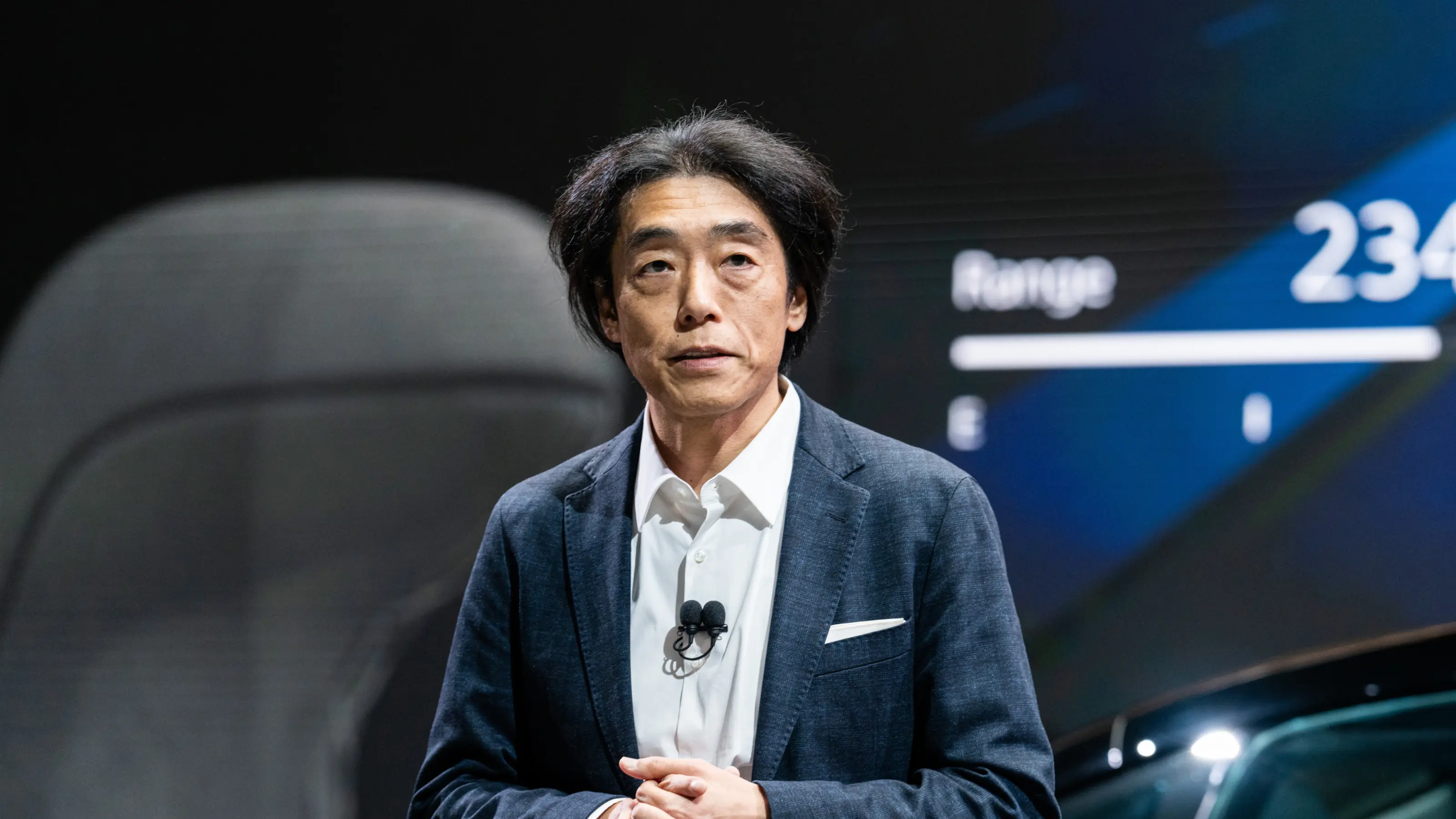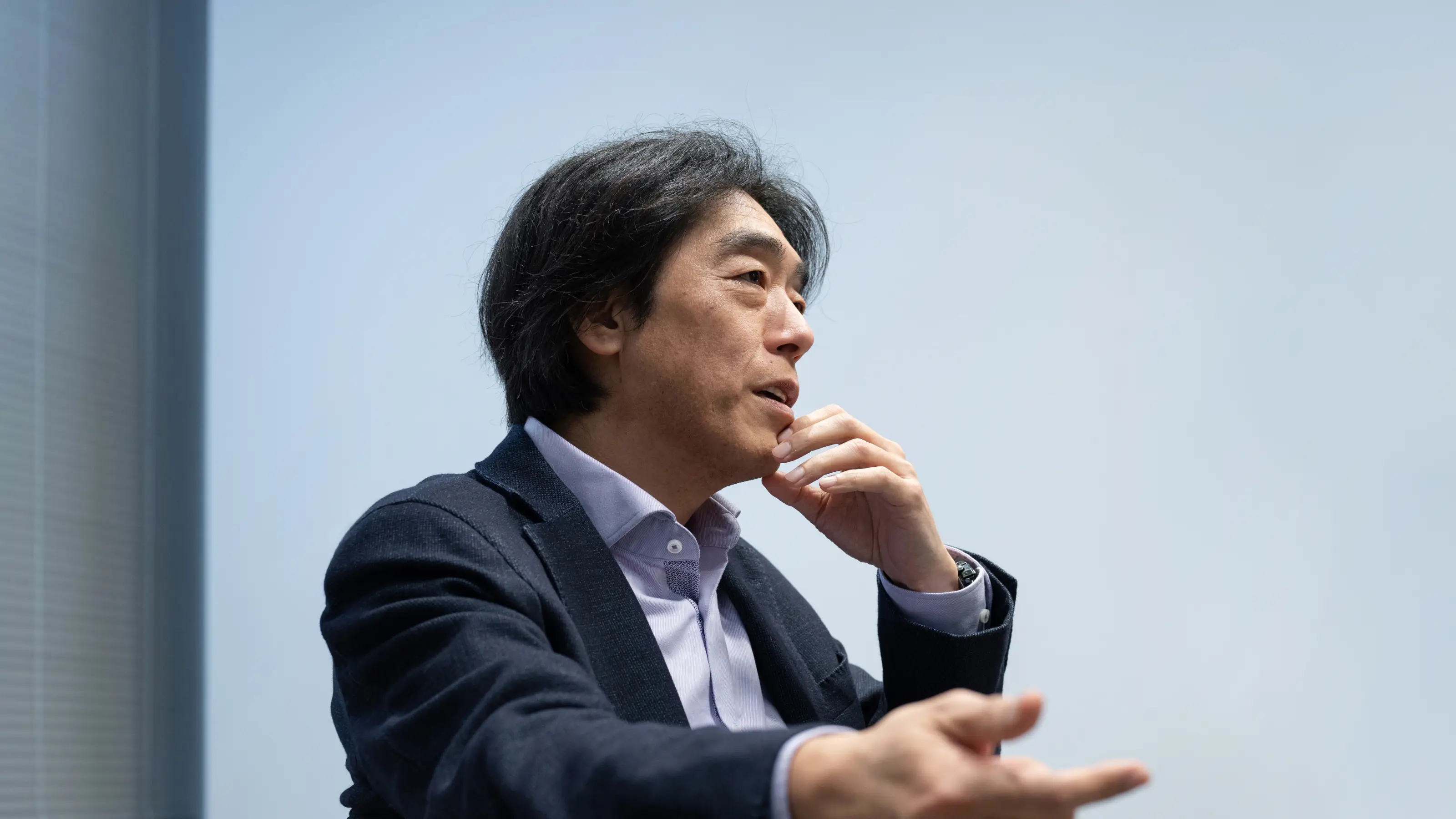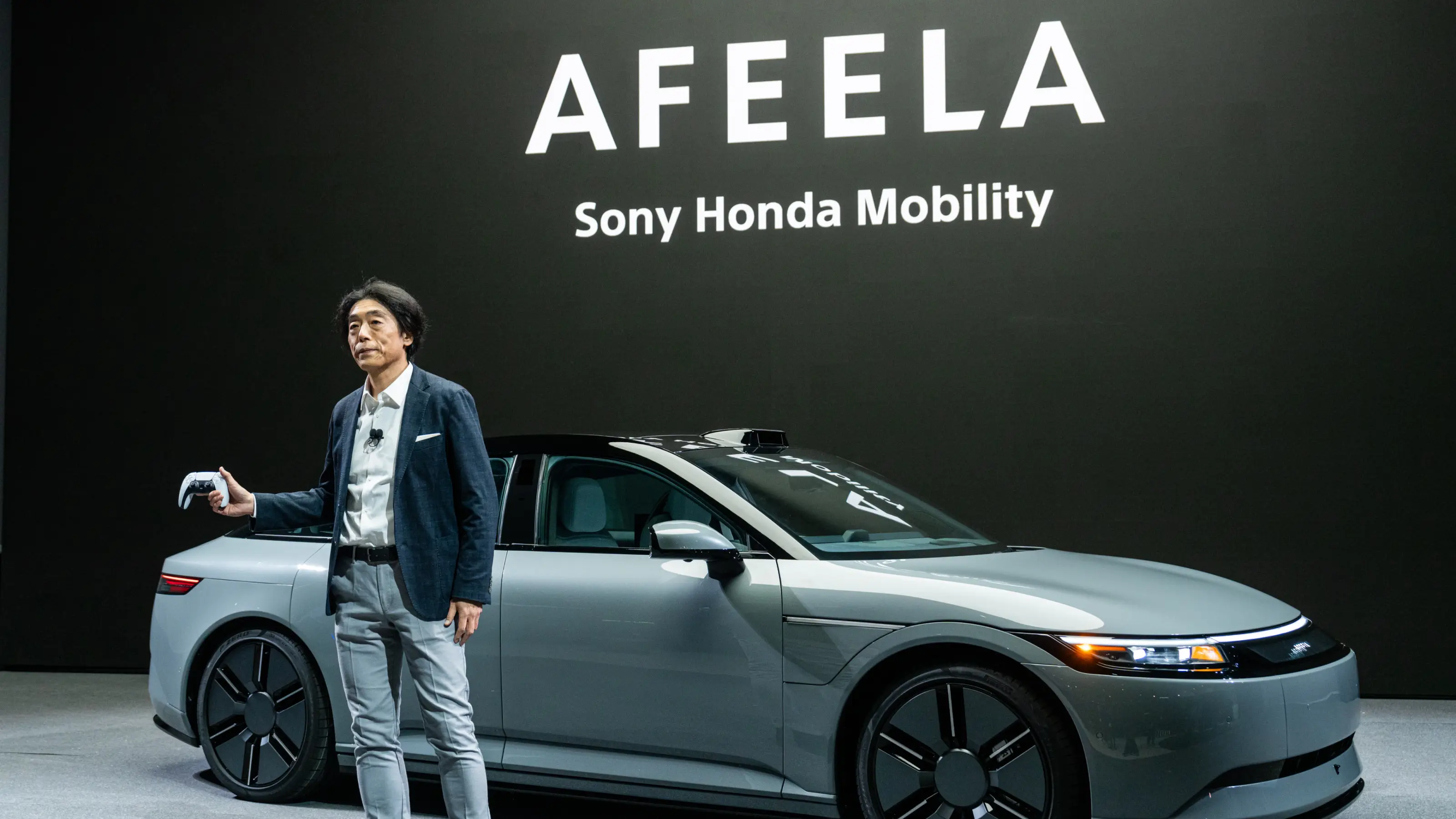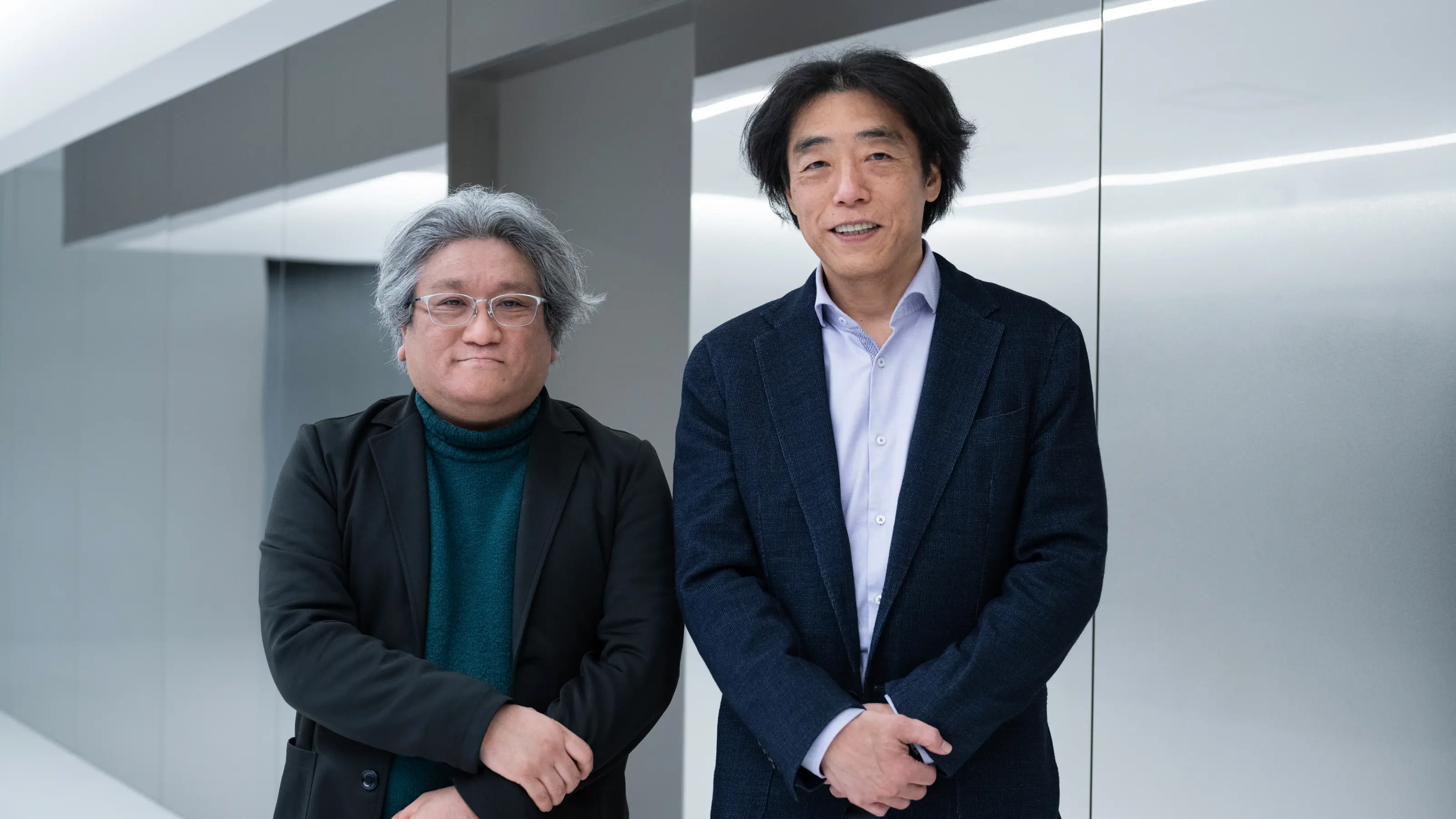Inner Voice Vol.2【Part 2】 Representative Director, President and COO Izumi Kawanishi’s Concept of Cars that Change with Software.
What does Representative Director, President and COO Izumi Kawanishi think of a car that changes with software?
Izumi Kawanishi, President and COO of Sony Honda Mobility, contributed to developing PlayStation 3 and other Sony products before spearheading the development of EVs with a focus on AI, robotics, and mobility.
Kawanishi is aiming for a Software Defined Vehicle (SDV). What kind of car will be changed by the power of software? We caught up with Kawanishi to find out.
IT journalist Munechika Nishida, who has interviewed Kawanishi many times over the past 20 years, conducted the interview.

- What do you mean by software-controlled mobility in the first place?
An essential feature is that it’s controlled autonomously by AI. Autonomous movement is what they all have in common: aibo walks autonomously, Airpeak drones fly autonomously, and Evs drive autonomously.
When we decided to make a car at Sony, we felt we could leverage our strengths. - What do you mean?
Cars today have many mechanical switches, even though many parts of automobiles are now software-controlled. It’s possible to change many things. There is still much room for growth in user interface (UI) and user experience (UX). We believe we can make proposals from the perspectives of UI and UX that would serve our customers.
We started the VISION-S project in 2018. Around that time, I visited startups developing EVs to see their work.
I wanted to see if they had similar ideas; they’re all IT engineers. If they did, I wondered if we could create an EV to maximize our expertise.

- In developing AFEELA, what do you have in mind?
I spent a lot of time imagining what future cars would look like. In short, I imagined the vehicles from science fiction movies that don’t exist now.
Currently, we need steering wheels, but what if we had cars without them? Also, if a vehicle is autonomous, it should be a non-driving car — rather than one the user drives. What car serves this purpose? Even if it’s impossible now, a foundation and a thought process must build up to that goal. - At the Sony Group Press Conference at CES2024, you demonstrated a DualSense® Wireless Controller-controlled AFEELA, the PlayStation 5 controller, and called it to the stage.
That’s really nothing special. Around the time of VISION-S, we experimented with operating the car in Germany from a racing controller in Japan. It wasn’t anything new.
However, I thought it was something good for people to know is possible if a car is controlled through software. It delivers more impact if the vehicle appears without a driver, right?

- Yes, that’s true. So, what do you think the operation of a car in a software-defined vehicle (SDV) will be like?
The main UI of an automobile includes a steering wheel, accelerator, and brake. I believe that more ways to control the car will emerge by adding software to these components.
Due to legal issues, the demo at CES cannot be mounted on live-action cars. However, on an extreme note, car operation via controller means that even people with only gaming experience can drive. Of course, understanding car dimensions is necessary, and safety is a top priority.
If driving sensations change, the driving experience also changes. That’s the power of software-defined driving. When I imagine the car of the future, I think it’s good to have different facets than cars that bend to the drivers’ will and are fun to drive. - At the Sony Honda Mobility booth at CES, you exhibited not only a prototype but also a simulator using AFEELA’s seat, steering wheel, and pedals. There, you used the Unreal Engine 5, a game engine, to reproduce the scenery of an actual road trip on the display inside AFEELA. What was the reason for showing that?
The theme we set for CES was redefining the relationship between cars and people. This demonstration relates to the fusion of the real and virtual worlds — the next step in automobile development.
For that, I wanted to showcase the ability to reproduce reality in a virtual space so people could see its drivability and other worlds inside AFEELA.
If we can do that, we could also enjoy going places and seeing what happens where we go. In other words, I believe we can turn transportation into new entertainment. Mobility could be the soil for the seeds of creative entertainment. - To do so, I think it will require ideas and cooperation from a wide range of people.
Most definitely. An ecosystem is necessary for this endeavor. We hope to create it by collaborating with various people, not alone.
It’s primarily due to our experience making PlayStation. I prefer an open world where people share ideas and create rather than trying to make things independently.
Security is also essential. Of course, we have a framework that we must protect, so we strive to do as much as we can within it. Now more than ever, it demands caution.
Additionally, there was an announcement about collaborating with Microsoft to develop a conversational personal agent. This may also leverage past experiences in AI robotics development, correct? What kind of experience are you aiming for with this?
I believe that the interior space of a car is more personal than a living room at home. Some people might talk to themselves or hum their favorite songs inside the car. In such a space, I thought having a companion that behaves like a conversational partner could make the experience even more comforting for people. It’s a challenge to create a presence beyond mobility that resembles such a companion. - Oh, by the way, you also announced a partnership with Polyphony Digital, the developer of the Gran Turismo series. What kind of things are you going to do together?
We’re right in the middle of discussing that,
We’ve worked together since my days at PlayStation. At that time, our relationship was PlayStation as a computing platform and games as applications.
We developed Gran Turismo as a driving simulator, but it was only possible because of its high computing power. Now, I’d like to put our heads together about possibly replacing it with a physical car.
In this interview, we looked back on Izumi Kawanishi’s origin story as an engineer, exploring the concept behind AFEELA from a technical perspective and revealing possibilities for the future of mobility. AFEELA at CES, controlled with a PlayStation controller, embodies Kawanishi’s philosophy.
We will continue to publish articles in this Stories section based on announcements from CES2024, exploring the background and vision for the future.
Click here for Part I: Engineers who have lived and breathed computers and networks are betting on the future of mobility.

Writer : Munechika Nishida